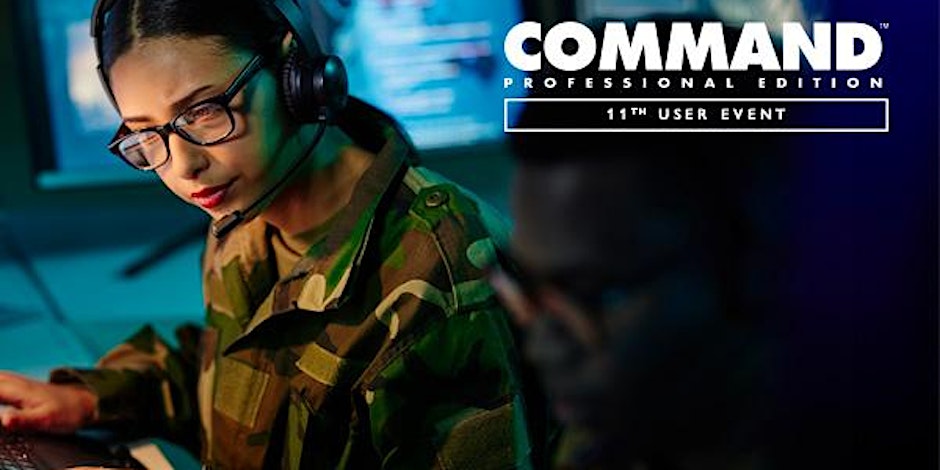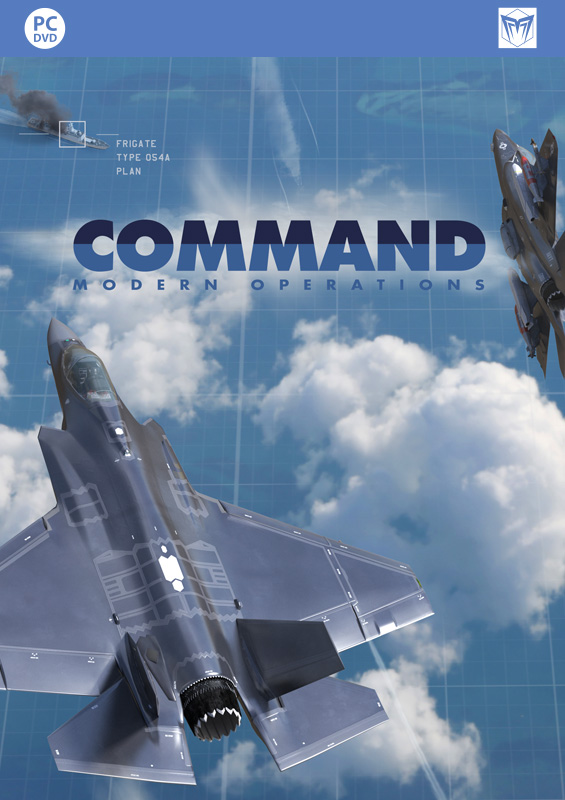11th Command User Event in Quantico – Tickets now available
The 11th Command User Event (CUE), the gathering of the Command-PE user community, will be held on September 9-13 2024 at the X-Corp facility at Quantico, VA, right next to the USMC installation. Past CUE attendees may be familiar with the facility, as it also hosted the 8th and 9th CUEs in 2021 and 2022 respectively.
Don’t miss your chance to interact face-to-face with the CPE development team as well as the worldwide community of its professional userbase from 23 nations and over 150 organizations – from government and military operators and analysts to industry and private sector vendors and contractors. Share your war stories and learn from the successes and mistakes of others. Reserve your attendance ticket on Eventbrite today!
Polishing the diamond: Command-PE v2.3.2 released
 Not much time has passed since the release of the last CPE update, but the dev team has been busy as always. This time around the emphasis has not been on new ground-breaking features like those that dominated the launch of v2.3 or the v2.3.1 update, but rather on incremental improvements: tweaking the new features and fixing reported issues as suitable.
Not much time has passed since the release of the last CPE update, but the dev team has been busy as always. This time around the emphasis has not been on new ground-breaking features like those that dominated the launch of v2.3 or the v2.3.1 update, but rather on incremental improvements: tweaking the new features and fixing reported issues as suitable.
Among the standout additions & changes for this release are:
- New UI elements for the cargo-ops and cargo-container windows
- A new Lua method for creating a new blank scenario (very handy for constructing a scenario for scratch completely hands-off)
- Improved DIS support for the new ground-unit annex
- Proportional navigation for weapon terminal guidance has been temporarily disabled as a number of logic flaws were discovered in it
- Significantly improved AI logics when using dual-mode SEAD weapons (e.g. AARGM) against radar emitters
- Improvements in trajectory modeling for HGVs with terminal guidance (e.g. DF-27 anti-ship variant)
- Lots of improvements in ballistic missile, MaRV, HGV and ABM logics
- Plus numerous improvements and fixes related to “double-flame” (ie. 5-sec timeslice) execution mode, as well as the v505 release of the DB3000 and CWDB databases.
The v2.3.2 update is now available for download by all existing CPE customers through the Matrix Pro Sims portal. The dev team is already hard at work assembling the next major release, which will see the integration of RTMP into the mainline release as well as numerous other features.
Nitro boost and DB magics: Command-PE v2.3.1 released
 Missed us? It hasn’t been long since the release of the big v2.3 update for Command-PE, and the dev team has continued to fire on all cylinders. Following the release of the Showcase: Icebreakers DLC and its accordant CMO update, it’s time to take the wraps off what we’ve been working on since last December: The v2.3.1 update for Command-PE is now available.
Missed us? It hasn’t been long since the release of the big v2.3 update for Command-PE, and the dev team has continued to fire on all cylinders. Following the release of the Showcase: Icebreakers DLC and its accordant CMO update, it’s time to take the wraps off what we’ve been working on since last December: The v2.3.1 update for Command-PE is now available.
While the release notes for this update are their usual mile-long ones, two key items easily stand out: RAMDB and the performance improvements.
- RAMDB is, in a word, massive. In more words? RAMDB is an exceptionally powerful tool aimed at automating Command database edition, verification and version control. It is also a built-in database browser and comparator, and allows the generation of automated reports. To those among our pro customer base who have been asking for this for years: Your prayers have been heard and answered.
As an aside, the entire DBTools suite (which now also includes RAMDB) is now no longer a separate app bundled with the the DB-Editor, but instead has been merged right into the main CPE application. This may not sound like a huge change (and from a user’s perspective it’s not), but it finally opens the door to directly linking the functionality offered by DBTools (post-change validation, for example, or the calculation of highly-dynamic values) right to the actual simulation engine. As you may imagine, this creates a whole new world of possibilities hitherto impossible. - Speed improvements: One of the most common feedback requests we’ve received since the release of v2.3 has been for even more performance and scalability, to better exploit the potential unlocked with the transition to a 64-bit architecture. We are happy to say this process is well underway, and the first fruits are evident: v2.3.1 clearly demonstrates an across-the-board performance leap over v2.3, enabling even greater-scale analysis and wargaming cases.
As usual, the new update also benefits from all the fixes, tweaks and performance improvements of the recent CMO release, as well as the new content additions including the fantastic new versions of the DB3000 and CWDB databases.
The v2.3.1 update for CPE is now available to all existing users through their personalized pro portal access, while the development is team is already busy assembling the next major release. Stay tuned!
Command Showcase: Icebreakers released!
Get it at MATRIX GAMES or STEAM
Santa’s coming to Defense town: Command PE v2.3 now available
 Boy, time sure flies past when you’re having fun. It’s been barely a little over half a year since the groundbreaking release of CPE 2.2, and here we are again with another milestone release for Command PE: Version 2.3 is now available for download by new and existing pro customers alike.
Boy, time sure flies past when you’re having fun. It’s been barely a little over half a year since the groundbreaking release of CPE 2.2, and here we are again with another milestone release for Command PE: Version 2.3 is now available for download by new and existing pro customers alike.
The v2.3 update follows closely on the steps of the commercial CMO v1.06 release, and leverages the numerous groundbreaking changes introduced in that update. Chief among them is undoubtedly the migration to a 64-bit architecture and the adoption of a brand-new, DirectX-11-based map engine.
Other new features include:
- Weather and the day/night cycle affect air sorties. Non-all-weather aircraft are grounded at night or in bad weather.
- C-RAM and counter-battery mechanics: Unguided rockets are no longer auto-detectable and unengageable: They can now be engaged by suitable weapons (Centurion C-RAM, Iron Dome etc.) but first they need to be picked up by sensors capable of detecting them. Sensors designed for counter-battery role can even backtrack the trajectory of a detected rocket or ballistic missile and provide a rough location of its firing point, thus enabling counter-battery fire.
- Target Priority Lists: Prioritize targets as part of doctrine settings. This makes it even easier to set up realistic targeting behaviors for the AI.
- Numerous UI tweaks and improvements such as revised zone management and mouse-driven selection on zones and patrol areas.
- Proximity-fuzed airburst round mechanics: Much more realistic modeling of proximity flak, a weapon/fuze type critical in WW2 and currently making a big comeback as a drone & PGM killer.
- New weapon type: Directional high-power microwave (HPM) projector weapons (aka “EMP guns”). Two distinct subtypes of EMP projectors are currently modelled: Mechanical antenna emitters like AFRL’s THOR/Mjolnir prototype, which emit a broad “broom sweep” EMP beam to effect single or multiple enemy units concurrently, and AESA antenna emitters like Epirus’ Leonidas system, which are able to form and direct multiple tight beams concurrently in order to defeat multiple threats.
- Per-sensor mast height. Different horizon ranges and LOS clearances for different sensors on the same platform.
- Terrain type-dependent skyline / land-cover heights. Some units can fly between treelines or buildings, or pop their mast-mounted sensors above the local vegetation to get a clearer look of the battlefield.
- Proper “QuickSink” mechanics: If you’ve seen any of AFRL’s videos on QuickSink then you know the tremendous potential of this new JDAM fuse, and the implications in any future maritime theater.
- Decoy mobile platforms: Can use entire full-kitted platforms as realistic-looking decoys.
- Rudder as a discrete component on ships & submarine, and rudder mechanics (incl. damage/destruction). If you’ve ever wondered by big ships and submarines feel very sluggish on turns, or are curious how the battleship Bismarck was significantly degraded after its rudder was stuck by a lucky torpedo hit, you can now find out.
- New OpenTopoMap layer: A superb layer for topography and road & urban networks that effectively replaces the now-retired Stamen map layers.
- Weapon-deployable platforms: For example, transport and launch child aircraft from parent aircraft (e.g. D-21 and WZ-8 recon drones).
- Numerous fixes and improvements on DIS connectivity – including a new start-up window for configuring the selected NIC as well as all other DIS-related properties.
- Numerous additions to Lua event hooks with new hook types such as UnitMovesBefore, UnitMovesAfter and OnStatusChange.
- The latest sim database releases with thousands of additions and tweaks.
In addition, v2.3 is the first CPE version eligible for submission into the ATO (Authority To Operate) process, with the goal of formally certifying its suitability for mass deployment into combatant commands, front-line units and other high-security environments.
CPE v2.3 is available for download to all customers through the Matrix Pro Sims personalized portal. Get it and turbocharge your wargaming, analysis and training capability today!






